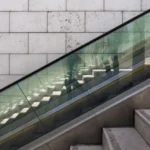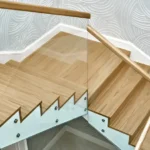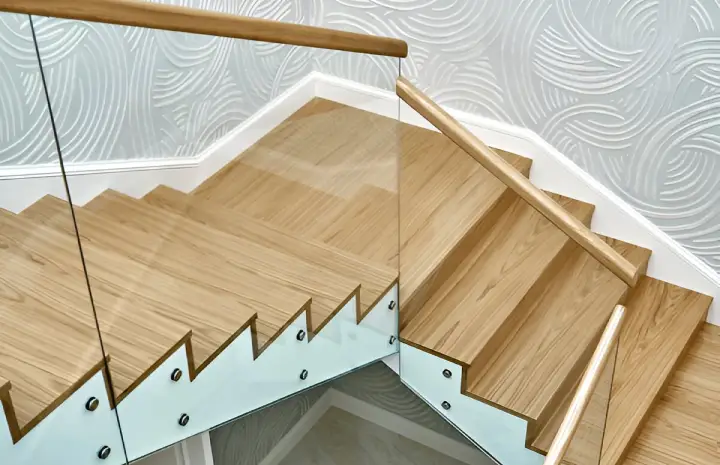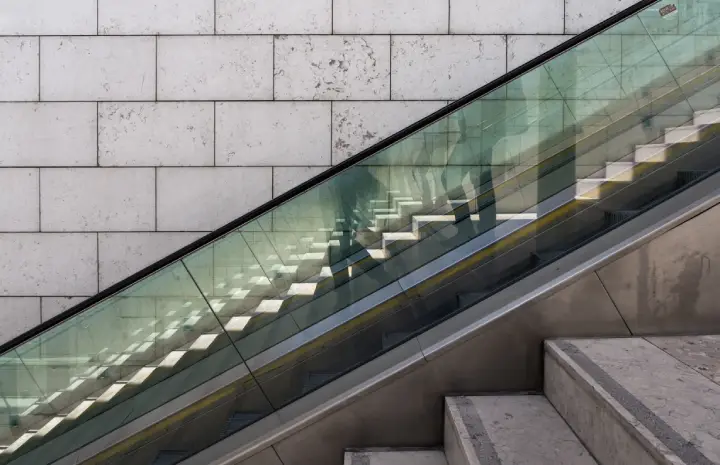From Concept to Clarity: The Art of Stair Glass Installation in 2025
In the evolving world of interior architecture, one design element has truly redefined modern luxury — Stair Glass Installation. What was once seen as a bold experiment in transparency has now become the hallmark of contemporary design. In 2025, glass staircases aren’t just functional structures; they’re architectural statements that blend engineering precision, artistry, and imagination.
From concept to completion, every stair glass installation is a journey — a process that requires creativity, technical mastery, and an understanding of how light interacts with space. Whether in a minimalist villa, a luxury penthouse, or a commercial atrium, stair glass design brings together strength, clarity, and elegance like never before.
Let’s explore how this art form has evolved — and why 2025 marks a new era for stair glass installation in modern architecture.
1. The Concept: Rethinking Stair Design for Modern Spaces
Traditional staircases once focused solely on structure — connecting one level to another. But today’s homes and offices demand more. They require fluidity, openness, and aesthetic impact. That’s where the idea of stair glass installation takes shape.
Architects now view staircases as sculptural features that influence the mood of an entire space. Glass, with its ability to diffuse light and erase boundaries, turns stairs into visual connectors rather than mere transitions.
The concept stage begins with questions of vision and function:
- Should the staircase feel light and floating, or bold and geometric?
- Will it serve as the centerpiece of the living area or complement the surroundings quietly?
- How can it enhance natural light, visual space, and harmony?
Answering these design questions lays the foundation for a flawless stair glass installation — one that reflects both personality and purpose.
2. The Evolution of Stair Glass in 2025
In 2025, stair glass design has reached new heights — literally and figuratively. Advancements in tempered glass strength, precision cutting, and structural adhesives now allow for creative freedom like never before.
Key innovations defining modern installations include:
- Smart Glass Technology: Switchable glass panels that turn opaque at the touch of a button, offering instant privacy.
- Ultra-Clear Low-Iron Glass: Eliminates green tint for pure transparency and color accuracy.
- Curved and 3D-Formed Glass: Enables seamless bends and artistic shapes for spiral or flowing stair designs.
- LED-Integrated Glass: Panels embedded with linear lighting for enhanced safety and aesthetics.
- Hybrid Materials: Combinations of glass with aluminum, wood, or stone to create balance between warmth and modernity.
These innovations have transformed staircases from structural necessities into centerpieces of modern architecture — dynamic, light-driven, and infinitely customizable.
3. The Design Phase: Blending Art and Engineering
Every stair glass installation begins as a design blueprint where aesthetic vision meets structural logic. It’s not enough for a staircase to look beautiful — it must also meet strict safety standards, load capacities, and spatial constraints.
At this stage, designers collaborate with structural engineers to determine:
- The correct glass thickness (typically 12–19mm tempered or laminated).
- The load-bearing points and hidden support systems.
- The appropriate fixing method — clamps, channels, or embedded bolts.
- The integration of lighting, handrails, and architectural detailing.
Designers also use advanced 3D modeling and Building Information Modeling (BIM) tools to visualize how glass will interact with light and architecture throughout the day. This level of precision ensures that the end result is not only stunning but also structurally perfect.
4. Material Selection: Choosing the Right Glass
Choosing the right glass is at the heart of every stair glass installation. In 2025, clients have a variety of options tailored to function, safety, and visual effect.
1. Clear Tempered Glass:
The most popular choice for its strength and transparency, perfect for creating open, bright interiors.
2. Laminated Safety Glass:
Features multiple layers bonded with resin, ensuring the glass stays intact even if cracked — ideal for family homes or commercial use.
3. Frosted or Etched Glass:
Provides texture and privacy while still allowing natural light to pass through.
4. Tinted Glass:
Available in smoke gray, bronze, or green hues for contrast and character.
5. Curved Glass:
Custom-bent for spiral or arched staircases, delivering dramatic and fluid designs.
Each type of glass offers a distinct aesthetic advantage — and combining them creatively can produce stunning results that suit any architectural style.
5. The Installation Process: Precision and Craftsmanship
The installation phase is where design turns into reality. This step demands exceptional precision and craftsmanship. Even a millimeter of misalignment can affect safety and appearance.
Step 1: Site Assessment
Technicians inspect the space to ensure accurate measurements, load support, and alignment with the design blueprint.
Step 2: Frame and Fixing Preparation
Aluminum or stainless-steel channels are fixed along stair edges, or recessed fittings are prepared for frameless installations.
Step 3: Glass Placement and Alignment
Tempered or laminated panels are carefully installed and leveled, with protective pads to absorb tension.
Step 4: Securing and Finishing
Joints are sealed with silicone or gaskets, ensuring structural integrity and a seamless appearance.
Step 5: Polishing and Safety Testing
Edges are polished for clarity, and the installation undergoes strength and balance testing before final handover.
It’s a meticulous process where engineering precision meets artistic finesse — the essence of the “art” in stair glass installation.
6. The Design Impact: Transforming Light and Space
The true beauty of stair glass installation lies in its ability to manipulate light. By removing opaque barriers, glass creates the illusion of larger spaces and floods interiors with brightness.
Here’s how it enhances modern homes:
- Amplifies Natural Light: Reflective surfaces carry light through multiple floors.
- Opens Up Interiors: Visual transparency eliminates spatial boundaries.
- Adds Architectural Drama: Floating or curved glass elements create sculptural impact.
- Boosts Property Value: Modern, open designs are highly desirable in Dubai’s real estate market.
Simply put, a well-executed stair glass installation doesn’t just change a staircase — it transforms the entire home environment.
7. Why Professional Installation Matters
While DIY may work for simple fixtures, stair glass projects demand expert execution. Professionals ensure:
- Compliance with UAE building codes and safety standards.
- Use of heat-soaked, load-tested glass.
- Proper alignment, sealing, and calibration.
- Secure, aesthetic integration with flooring, walls, and lighting.
Entrusting your stair glass installation to specialists guarantees long-term performance, safety, and flawless finish — essential for luxury residential and commercial projects.
8. Stair Glass Installation Trends to Watch in 2025
Design trends continue to evolve as glass technology advances. Here are the styles defining 2025 interiors:
- Minimalist Frameless Railings: Invisible hardware, pure glass finish.
- Textured or Patterned Glass: Artistic etching adds depth to plain panels.
- Matte-Finished Handrails: Black or brushed gold accents for contrast.
- Smart Glass Integration: Switchable panels offering dynamic privacy.
- Sustainable Design: Recycled glass and energy-efficient LED systems.
These trends highlight the direction of modern interiors — sleek, sustainable, and light-driven.
9. Stair Glass Installation in Dubai and the UAE
In the UAE, where architecture blends innovation with luxury, stair glass installations have become synonymous with modern design. Homeowners, developers, and architects alike are choosing glass for its timeless aesthetic and functionality.
Dubai’s architectural style — defined by clean lines, luxury finishes, and abundant natural light — perfectly complements glass features. Whether it’s a Palm Jumeirah villa, a Business Bay office, or a Downtown Dubai penthouse, glass staircases enhance both value and visual appeal.
10. Conclusion
Stair Glass Installation in 2025 is more than a building trend — it’s a reflection of how modern design values light, openness, and innovation. From initial sketches to the final polish, every step of the process embodies a balance of art and precision.
As homes continue to evolve into spaces of expression and functionality, stair glass design stands as a symbol of clarity — transforming ordinary steps into extraordinary experiences.
So, if you’re ready to elevate your home’s design, invest in the art of stair glass installation — where transparency meets timeless elegance.




